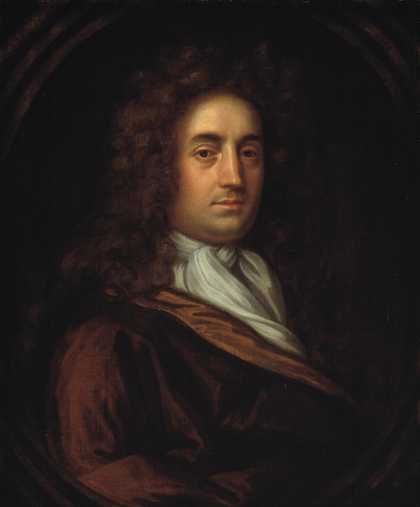
Fig.1
British School 17th Century
Portrait of Robert Colman c.1690
Tate
T07240
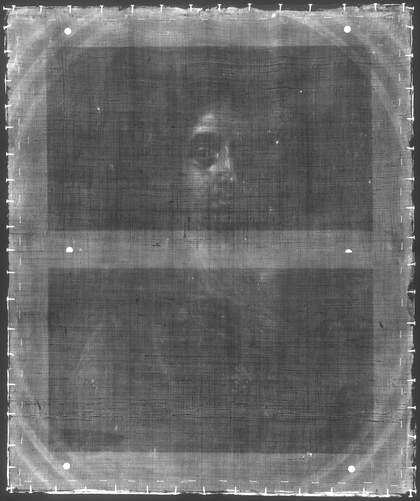
Fig.2
X-radiograph of Portrait of Robert Colman c.1690
This painting is in oil paint on canvas measuring 762 x 635 mm (fig.1). The support is a piece of plain-woven, linen canvas with 16 vertical x 14 horizontal threads per square centimetre. It has a modern lining of linen canvas and paste with a beeswax barrier on the back. The pine stretcher is also modern. The original canvas contains many slubs and has bands of uneven threads, mostly in the horizontal direction (fig.2).
There is pronounced cusping in the canvas weave (extending about 12 cm into the picture plane) on all edges except the bottom.1 This probably indicates that the canvas was primed in a long strip, to be cut down as necessary when dry. All four original tacking edges are extant. Although they are now overpainted, they show some evidence of original paint, so probably the painting was originally a little bigger, especially at the lower edge; the lower spandrels, which like the upper were planned from the outset, are slightly less deep.
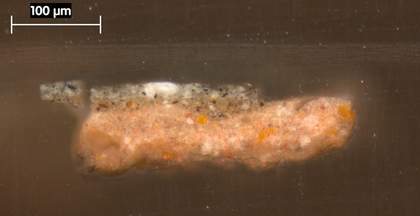
Fig.3
Cross-section from the bluish grey shadow of the white neckcloth, photographed at x250 magnification. From the bottom upwards: reddish brown ground; greyish brown underpaint; grey paint of neckcloth
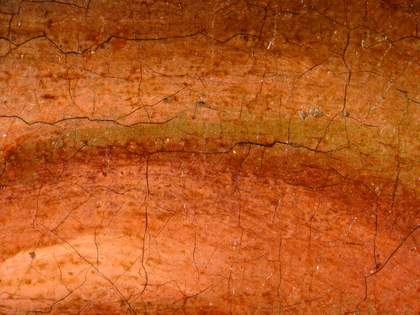
Fig.4
Photomicrograph at x8 magnification of the sitter’s right eyelid, showing ground left visible to form a shadow in the eye socket
The support has a pale, reddish brown ground, which is composed of lead white and chalk with vermilion, red lead, yellow and brown earths and some fine black pigment (fig.3).2 The ground is relatively thin and was applied smoothly. The colour of the ground has been exploited in the composition, for example it was left exposed to form lines of shadow in the eye sockets (fig.4). It is also now visible through the harsh abrasion that has occurred in all the dark areas of the painting, that is: the background, most of the costume and the wig. There is no priming.
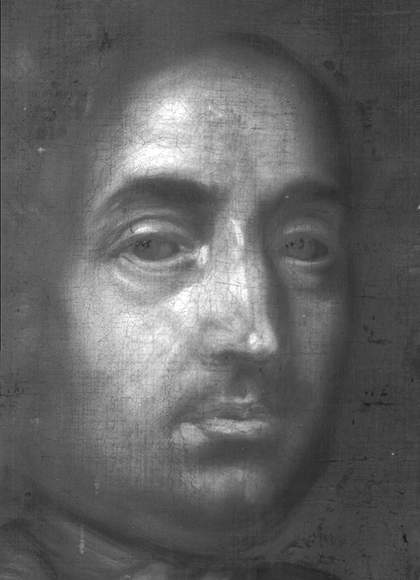
Fig.5
Infrared reflectogram detail of the sitter’s head
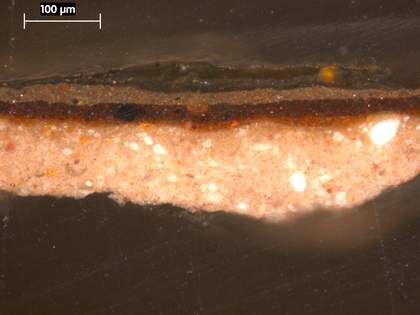
Fig.6
Cross-section from the red drapery at the bottom edge, photographed at x250 magnification. From the bottom upwards: reddish brown ground; thin reddish brown underpaint of drapery; thick semi-translucent red glaze, containing red lake, smalt, chalk, earth colours, yellow lake, vermilion, lead white and black; dense layer of brown overpaint; two or three layers of overpaint and varnish
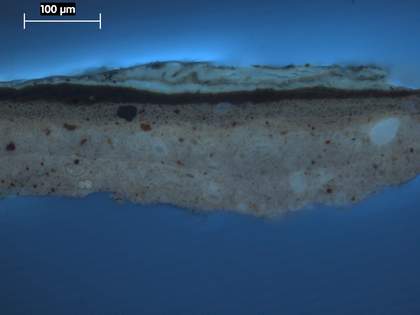
Fig.7
The same cross-section as in fig.5, photographed at x250 magnification in ultraviolet light: the fluorescence of the thick semi-translucent red glaze indicates a resinous or oleo-resinous binding medium

Fig.8
Another part of the cross-section in figs 6 and 7, showing the original paint in more detail
There is some indication of linear, black underdrawing in the sitter’s right eye and possibly in the mouth (fig.5).
Overall, the picture was thinly painted in opaque tones followed by glazing, including the now thin and faded red lake passages in the drapery and flesh tones. The paint layer structure was very simple and direct with only one or two layers present. For example, the red drapery was built up by glazing a modelled, opaque, orange red paint with a red lake to add depth to the shadows (figs.6–8). The appearance of the background in infrared reflectography (fig.5) suggested that there was little black pigment present and the paint here was built up by glazing directly over the ground.
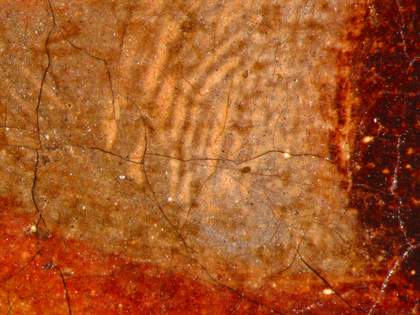
Fig.9
Photomicrograph of the sitter’s right eye, photographed at x10 magnification, showing blue and black pigments in the white of the eye
The artist’s choice of pigments in the delineation of the whites of the eyes is noteworthy. The white was admixed with a large amount of black, which is demonstrated by the dark appearance in the infrared reflectogram (fig.5), but he also added some blue, probably quite finely ground azurite, to both the whites of the eyes (fig.9) and to the white neckcloth. A blue particle was also found in a sample taken from the pink flesh paint.
Unfortunately, much of the painting has been overpainted by later hands to disguise the abrasion of the original paint. The face, however, is relatively intact, painted in warm, dense tones, which were worked into one another on the primed canvas with soft brushes. But in keeping with later repainting elsewhere, there is much later strengthening of the original paint in the sitter’s chin and to the right of his face, as evident in the infrared reflectogram (fig.5).
July 2021
